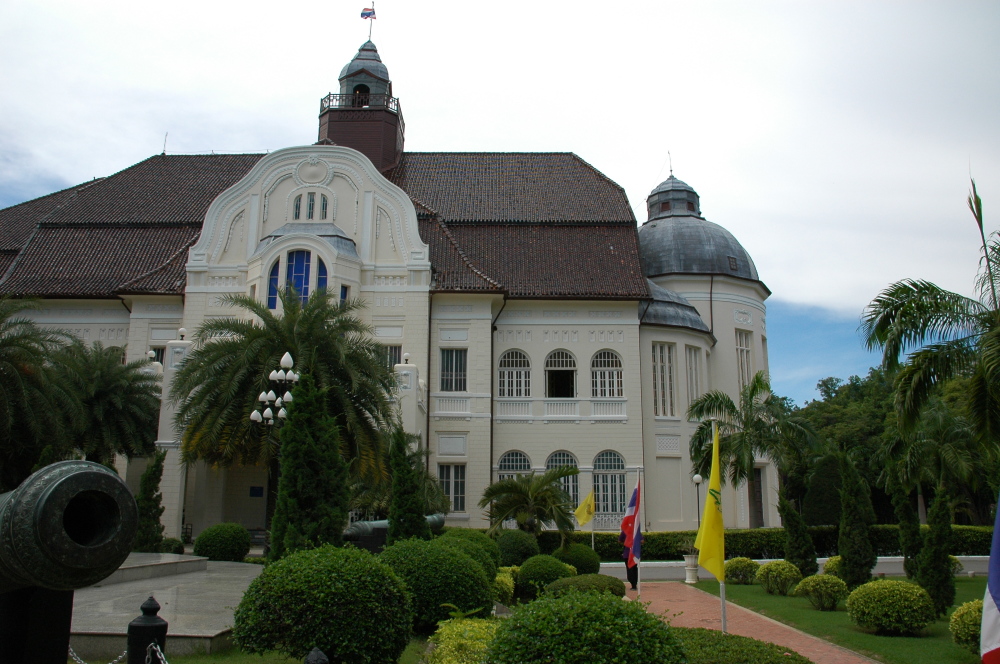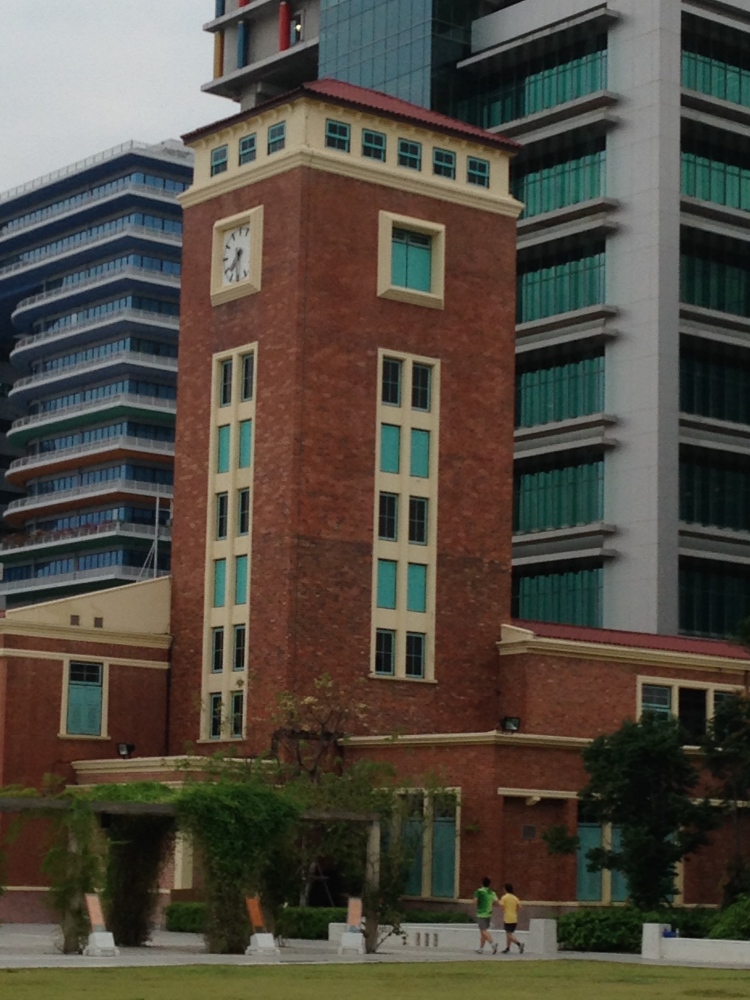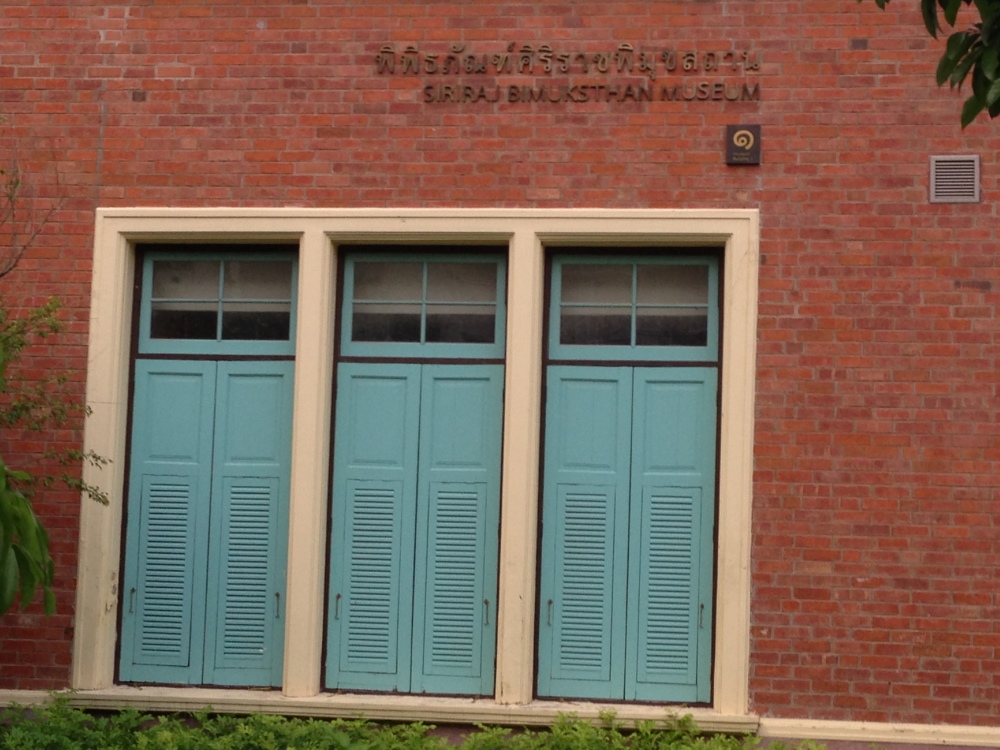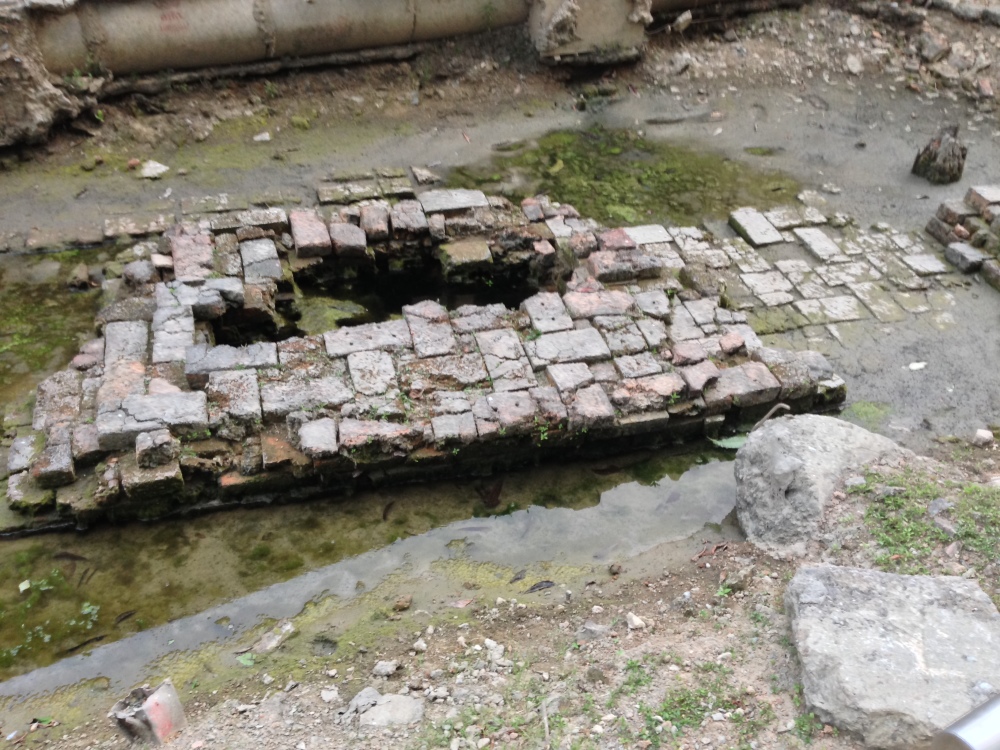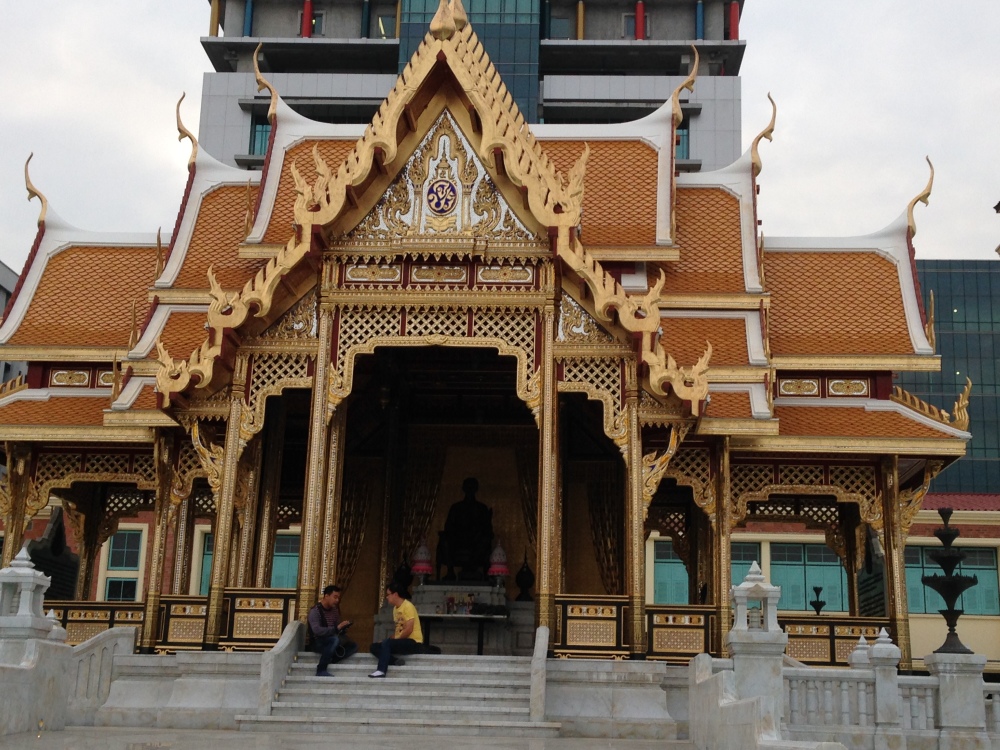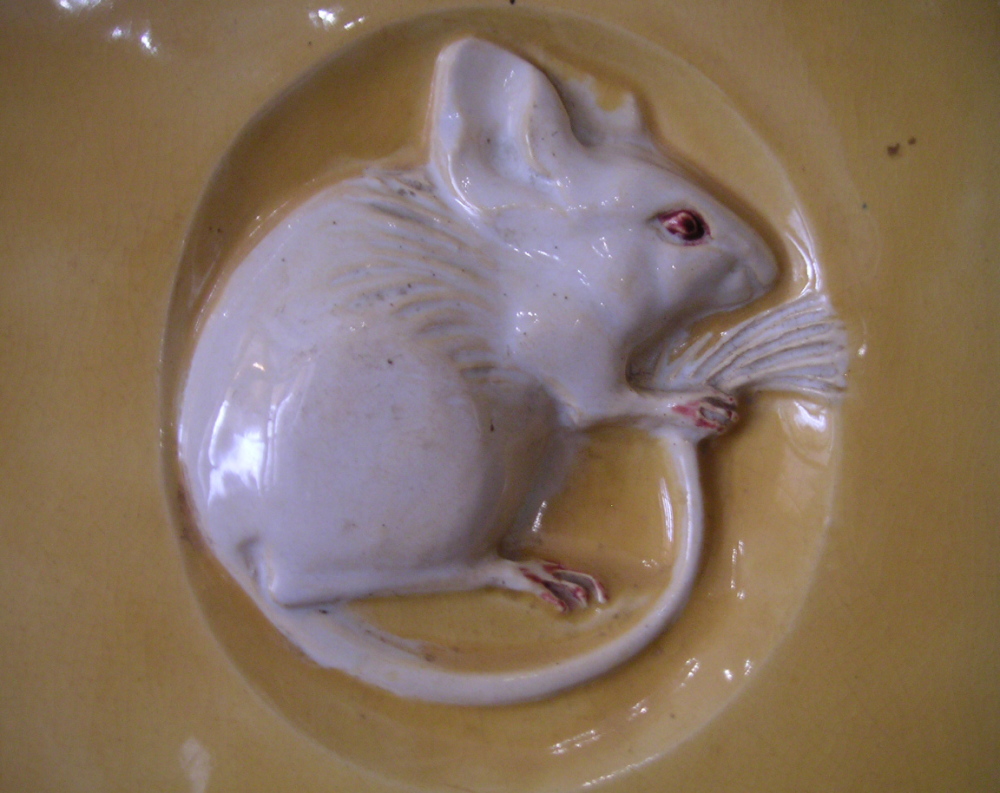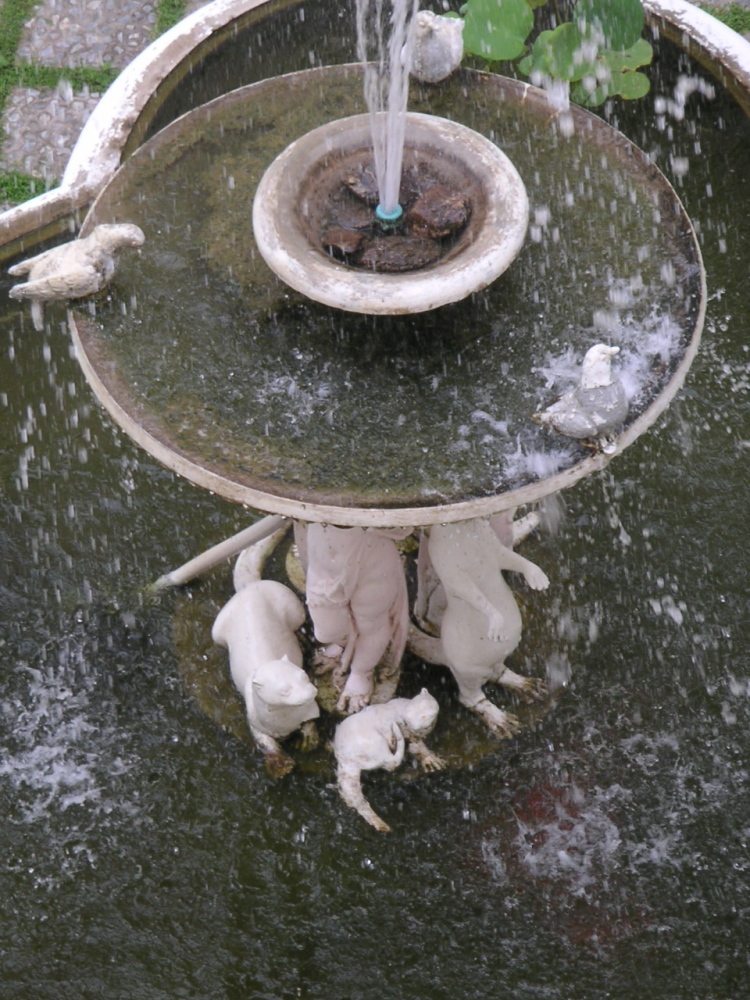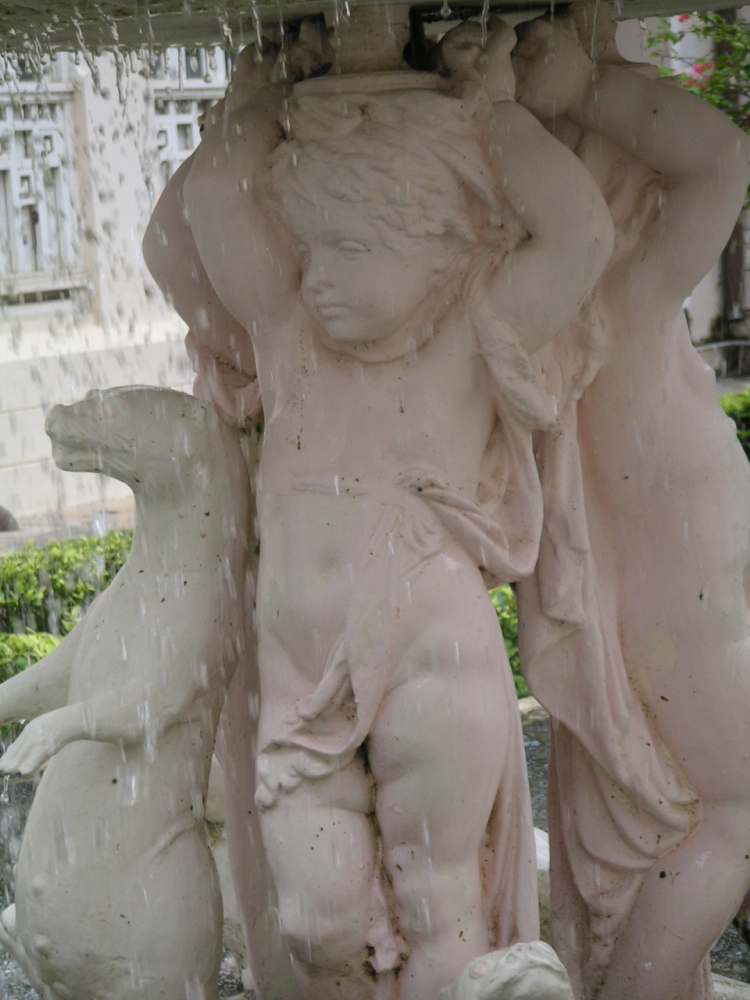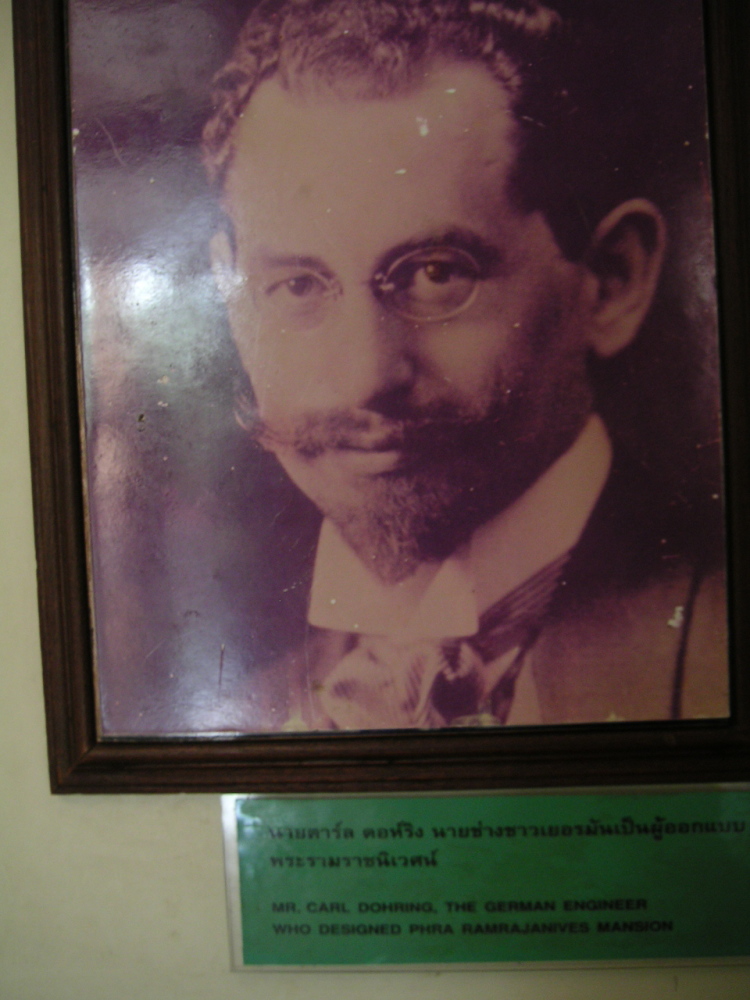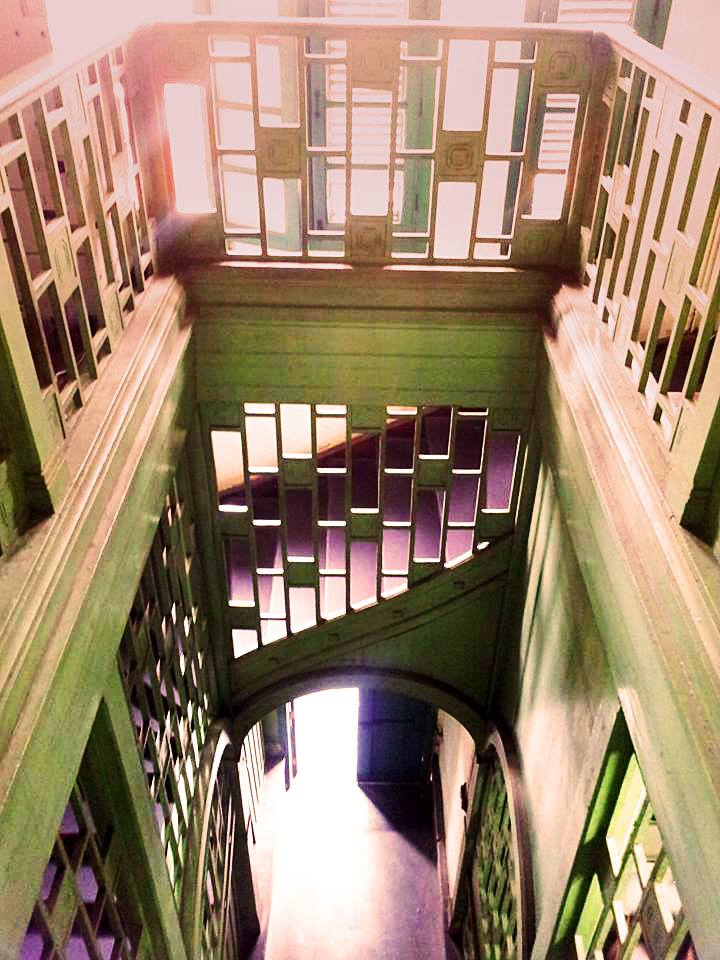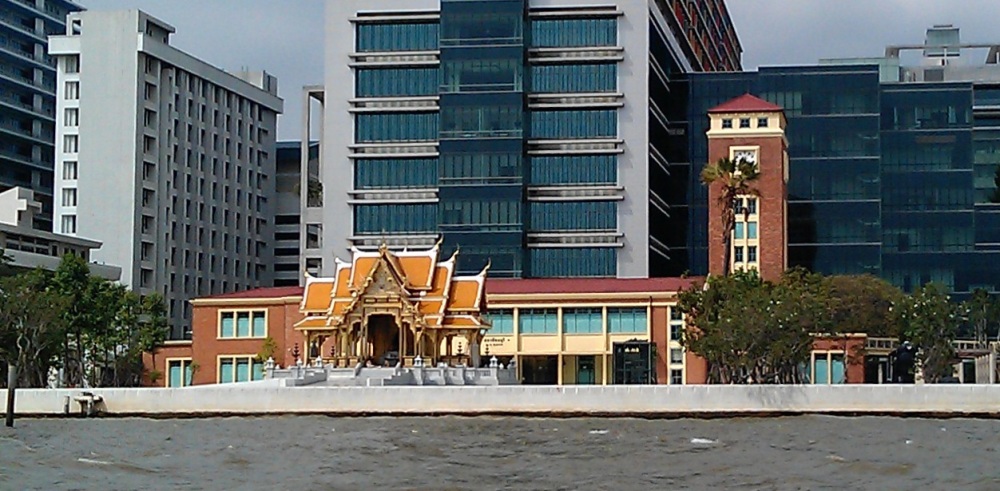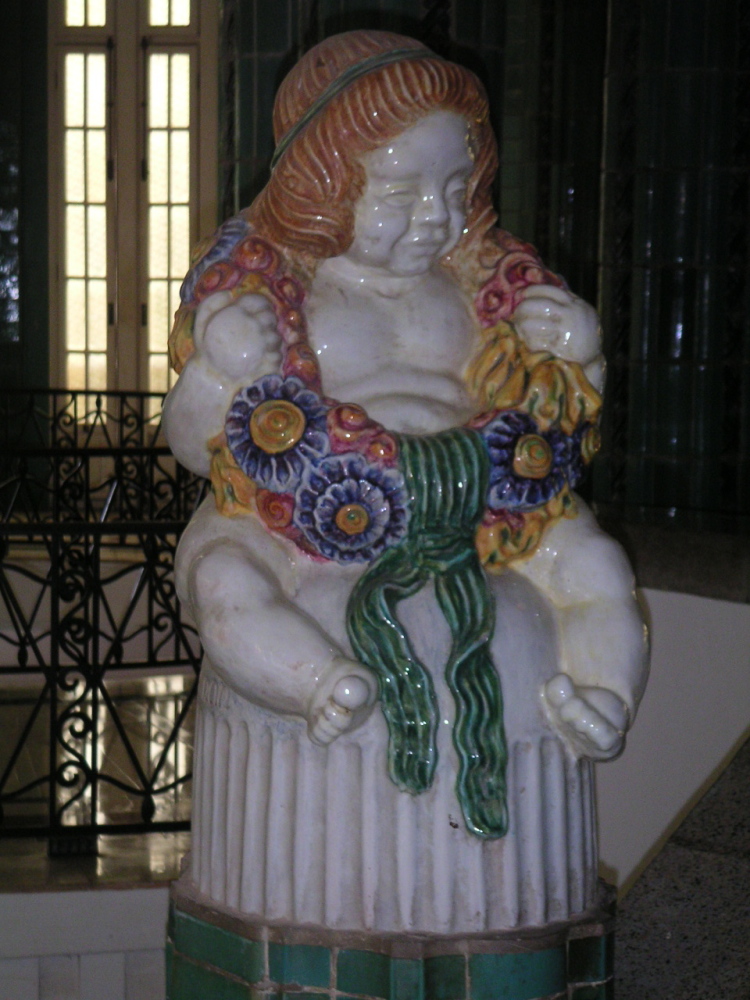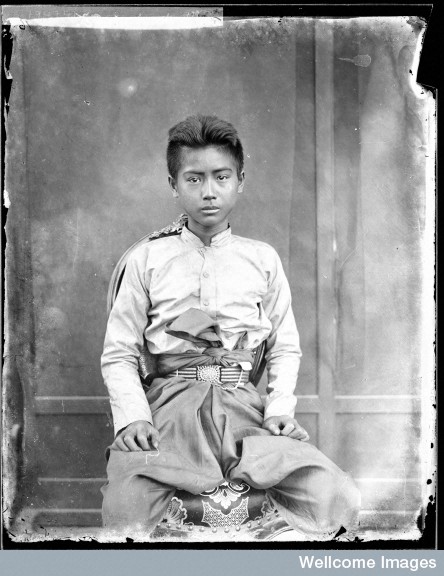
Siamese youth, photo by John Thomson. Courtesy of the Wellcome Library.
An exhibition of John Thomson’s photographs of Siam is running at the National Gallery in Bangkok. Thomson was a Scottish photographer, born in Edinburgh in 1837. He apprenticed to an optical and scientific instruments manufacturer and in 1856 followed evening classes at the Watt Institution and School of Art. His older brother was a photographer in Singapore, and in 1862 John followed in his footsteps. They were part of that diaspora of Scots, Irish, second sons and convicts who made up the rump of the British Empire.
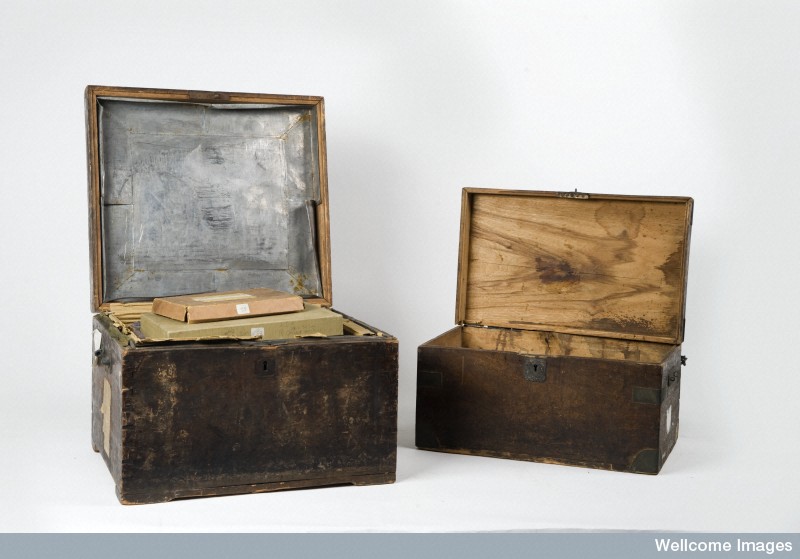
Chests John Thomson used to carry his photographic equipment. Courtesy of the Wellcome Library.
The nautical instruments business in Singapore led to his own photography studio, capturing the ex-pats of the day in their imperial finery. But John Thomson had that quality so few people retain beyond childhood: curiosity. Ten years travelling in the Far East followed. His lens took in a broad spectrum of human life that had never seen a camera: kings, princes, mandarins and beggars.
He travelled to Siam in September 1865. The 65 photographs on show at the National Gallery in Bangkok date from a time when you could probably count on one hand the cameras in the country. Thomson used both full plate and stereo cameras, and a method called ‘wet-collodion’ to produce a negative on glass. The cumbersome cameras (made from hardwoods) and equipment, including chemicals, made his travels across difficult terrain all the more awkward. In Petchaburi he had six men to carry the equipment for him.
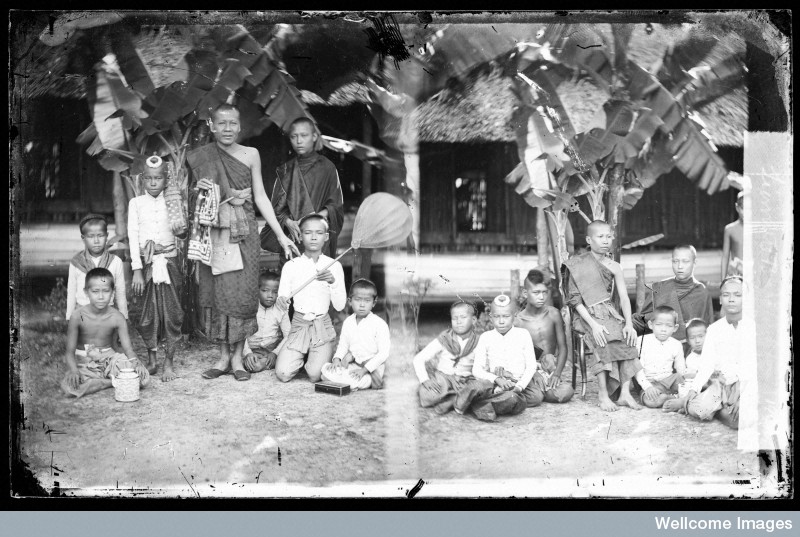
A group of monks and novices, 1867.
Thomson is an early street photographer and anticipates the photojournalism of the twentieth century. At the same time, his photographs formed the Victorian image of the Far East. Behind the coloniser is the missionary, the mapmaker and the photographer. Thomson’s endeavour was to record and classify with the eye of nineteenth-century social anthropology. In his later publications this orientalising tendency became more pronounced.
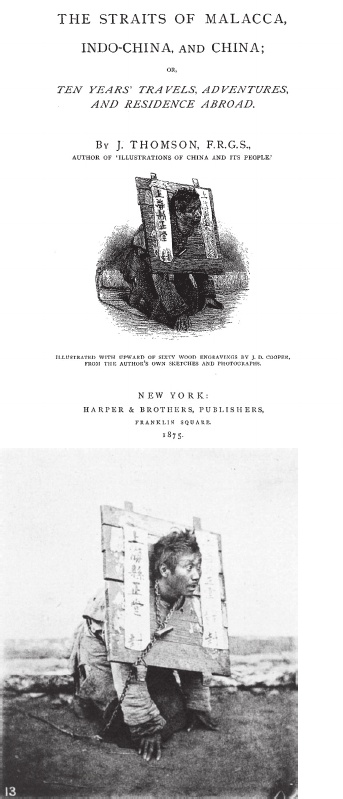
Frontispiece of John Thomson’s The Straits of Malacca (1875). Image courtesy of Beinecke Rare Book & Manuscript Library, Yale University.
Writing from Brixton in 1874 – the year of the Japanese invasion of Taiwan – Thomson thought that “at last the light of civilisation seems indeed to have dawned in the distant East”. He took a number of photographs of men in the infamous Cangue punishment, a wooden board around the neck which prevented the person from eating or drinking unaided.
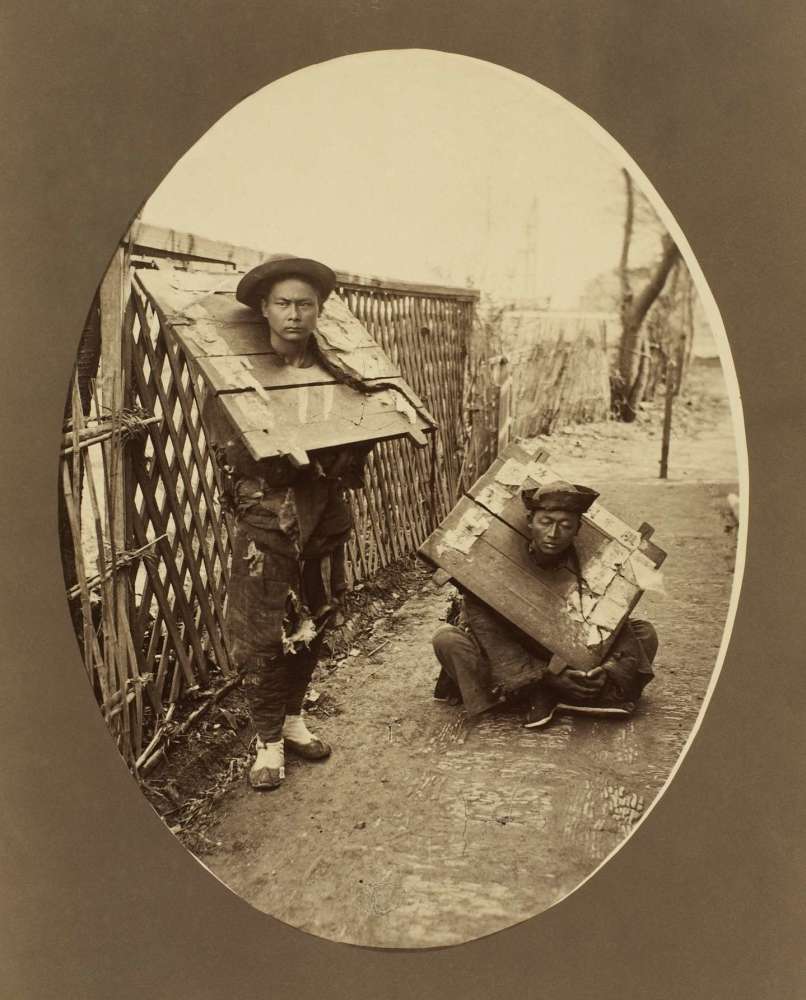
Two men punished with the Cangue in China. Photo by John Thomson.
His arrival at Paknam on the mouth of the Chao Phraya River is still vivid and full of detail, immediately recognisable to any old Thai hand:
The Menam, or Mother of Waters, is for some miles above its entrance a broad, sluggish, and uninteresting stream, flowing between low banks, and flat alluvial plains. When I visited Siam in the steamer ‘Chow Phaya,’ I went ashore at Paknam, the first town on the river, and made the acquaintance of a native officer who had charge of the customs station, and who honoured me with an audience at his residence. There I found him surrounded by a group of crouching slaves, by half-a-dozen children, and by as many wives … nor were tokens of refinement wanting, in embroidered wedge-shaped cushions, couches covered with finely-plaited mats, wrought vessels of gold or silver, and robes of silken attire. The cool and peculiar fashion of dressing the hair, adopted by both sexes, alike resembled an inverted horse-brush laid upon the crown of the head.
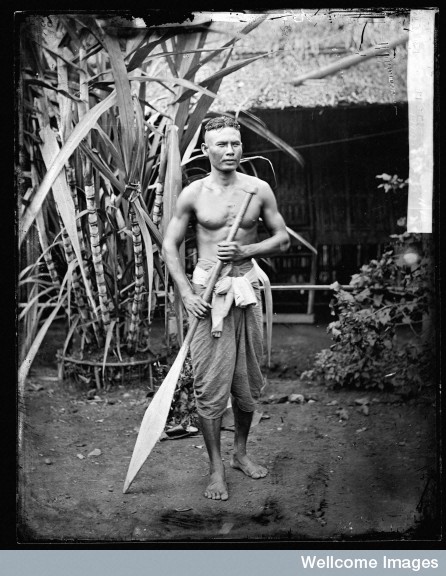
A Siamese boatman with his oar, photo John Thomson, circa 1865. Courtesy of the Wellcome Library.
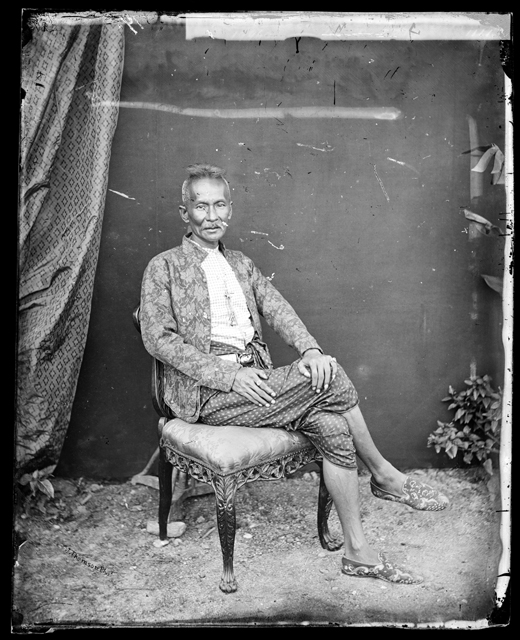
A Siamese nobleman, Racha Chaya, photo by John Thomson, circa 1865. Courtesy of the Wellcome Library.
On journeying upriver to Bangkok, he enquired about the building materials of the many temples. “I learnt to my disappointment that these temples are nothing more than brick and mortar embellished with gilding, foreign soup plates, and bits of coloured glass.”
Thomson describes Wat Saket just outside the old walls of Bangkok, and site of the ‘yellow-shirt’ protest movement of last year when thousands sat hectoring, trying to remove the ‘red shirt’ Prime Minister.
The principal building at Wat Saket is a huge unfinished pile of bricks and mortar – intended, as I suppose, to symbolise Mount Meru, the centre of the Buddhist universe – the summit of which commands an extensive view of the palm groves, and house roofs of Bangkok …a court at the rear, where the bodies of the dead, who have no friends to bury them, are cast out to the dogs and the vultures to be devoured … in the centre stood a small charnel house, while the pavement round about was covered with black stains and littered with human bones, bleached white by the sun.
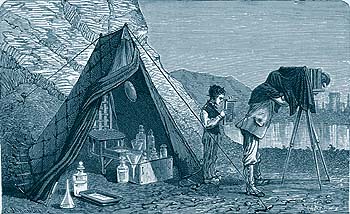
‘Photography and Exploration’, a wood-engraving from Gaston Tissandier, History and Handbook of Photography (1876) edited and translated by John Thomson.
Soon he had an audience with Rama IV, King Mongut, who reigned from 1851- 1868. King Mongut is best known outside Thailand for his portrayal in the film The King and I, based on a fictionalised account of Anna Leonowens’ diary as a tutor at court. Leonowens is notoriously unreliable with the truth. Authenticity is a tricky subject, and nowhere more so than in Thailand where the written record can be sketchy. Historiography and hagiography are in dire need of disentanglement. Leonowens was in court attendance from 1862 to 1867 so she might have run into the young photographer in the gilded halls of power.
His Majesty was pleased to appoint a day on which I should take his own portrait as well. The King requested me to visit his abode on Monday, October 6, in the company of the Krummun-alongkot, a nobleman holding the position of chief astronomer, that is, head of the astrologers attached to the palace.
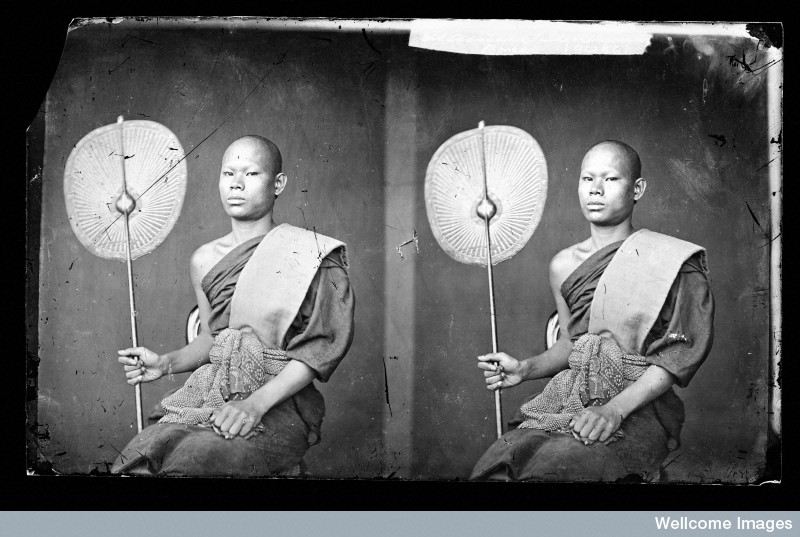
Siamese monk, 1865.
Thomson gives us a wonderful description of the interior of the Krummun’s room – a mix of East and West – at a time when Siam was looking to modernise but also to fend off the competing colonial powers of France (Cochin China) and England (Malaya & Burma).
In one corner there was a telegraphic machine, backed by a statue of Buddha. In the lap of the image there was a Siamese flute (the idol was off duty and under repair), and an electro-plated coffee-pot, which had evidently been forced into some unnatural use. There were also watch-tools, turning-lathes, and telescopes, guitars, tom-toms, fiddles, and hand-saws; while betel-nut boxes, swords, spears, and shoe-brushes, rifles, revolvers, windsor-soap, rat-paste, brass wire, and beer bottles, were mingled in heterogeneous confusion.
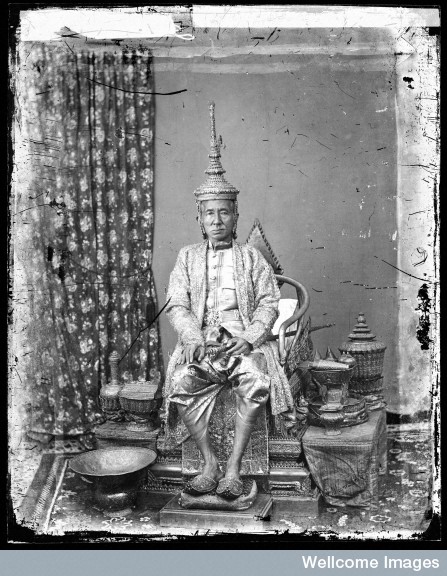
Rama IV, King Mongut, in Siamese regalia on October 6, 1865. Photo by John Thomson. Courtesy of the Wellcome Library.
Having photographed the king in two different attires – Siamese court robes and “a sort of French Field Marshal’s uniform” – Thomson was all the rage among the princelings, nobility, khunyings and assorted courtiers.
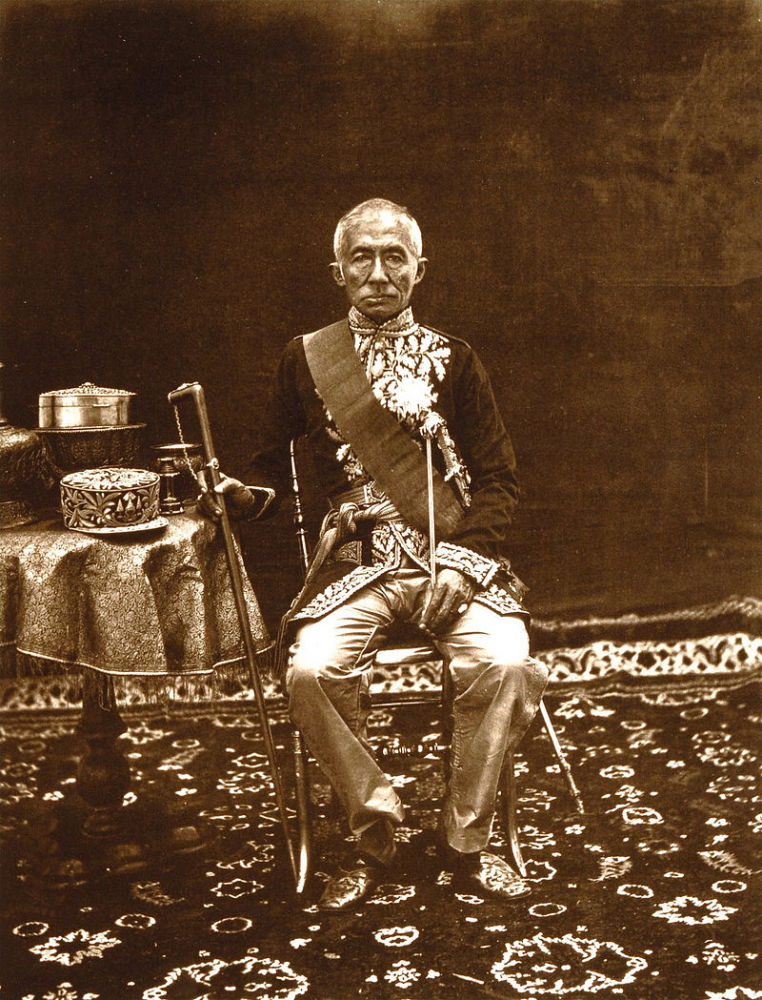
Rama IV, King of Siam, in European regalia, 1865. Photo by John Thomson.
The king invited him to attend the So-Kan or tonsure festival of the heir-apparent, Prince Chowfa Chulalongkorn, who “was deprived of the top-knot of his boyhood for the first time”.
Among the other photographs which I took on the spot, one represents his majesty as he receives his son and places him on his right hand, amid the simultaneous adoration of the prostrate host. Mrs. Leonowens, who ought to have known better, has made use of this photograph in a work on Siam which recently appeared under her name, and described it wrongly as ‘Receiving a Princess.’
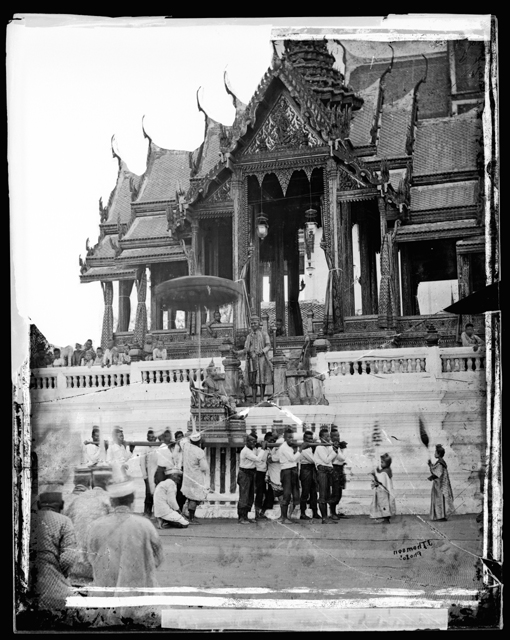
Presentation of a prince (heir-apparent Prince Chowfa Chulalongkorn?) to Rama IV, 1856.
Thomson witnessed a number of these topknot-cutting ceremonies performed with full Brahmanical rites. I attended a royal-sponsored rite of tonsure myself back in 1988, in the Brahmin temple near the Giant Swing. It’s a delightful ceremony. You can read about it here.
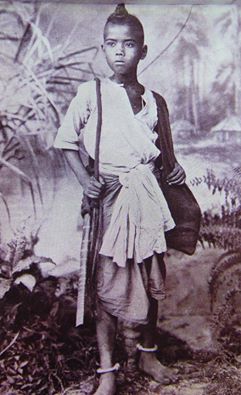
Siamese teenager with the traditional topknot. Attributed to John Thomson.
Thomson’s description of corruption in Siam reminds us that little has changed and that graft has deep roots.
I remember visiting a magistrate’s court in Bangkok, where a case of some importance was under investigation, and I noticed the same agencies at work there as in China, only that in the latter country the system of corruption is managed … with a degree of subtle polish and refinement.. the prisoners were shut up in a sort of cattle-pen in front, while their friends and supporters, laden with gifts of fruits, cakes, or other produce, crawled through the court in a continuous procession and presented their offerings for inspection as they passed the judge’s chair.
As I write, the former Prime Minister is being arraigned for ‘financial negligence’ by the current military regime. It’s a Siamese cat and mouse game.
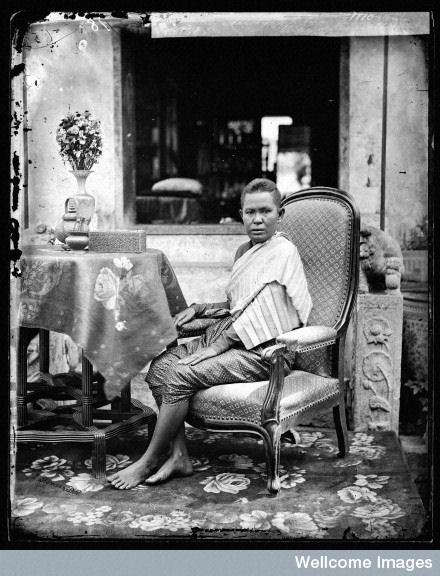
Wife of minister at the court of Siam, 1865.
![L0055544 Brother of the 1st king, Siam, [Thailand]](http://padraigrooney.com/blog/wp-content/uploads/2015/01/29f7c04a1228aa2a0e4d6a2bd1ca.jpg)
Thomson travelled to Petchaburi, a town I have been in and out of for a quarter century now, and for which I retain a particular affection second only to Ratchaburi. I didn’t know that Petchaburi benefited from an injection of English town planning, as Thomson explains:
The chief town, unlike Bangkok, was mainly built on land, and in some parts bore quite an English look. Thus, there were rows of well-built brick cottages, and a stone bridge across the river, broad enough and strong enough to sustain the traffic even of a metropolitan thoroughfare. The builder of this new town was a very clever young noble, who had visited England with the Siamese embassy, and who, at the time of my visit, was the deputy-governor of Petchaburee.
I wonder what happened to that lovely English bridge and the stone it was made from. I suspect the coming of the railways did away with it.
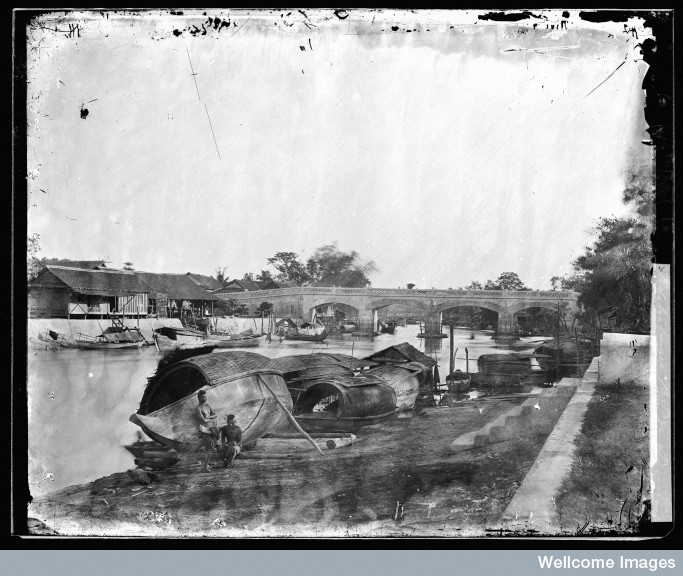
The river and bridge at Petchaburi, 1867. Photo by John Thomson.
Thomson went on to photograph Angkor Wat in Cambodia, China and the East End of London. He clearly had an observant eye, an affinity for kings and ordinary people alike, and a sharp technique. His Siamese photographs capture the country and its people as they were at the dawn of the modern world, as they will never be again.
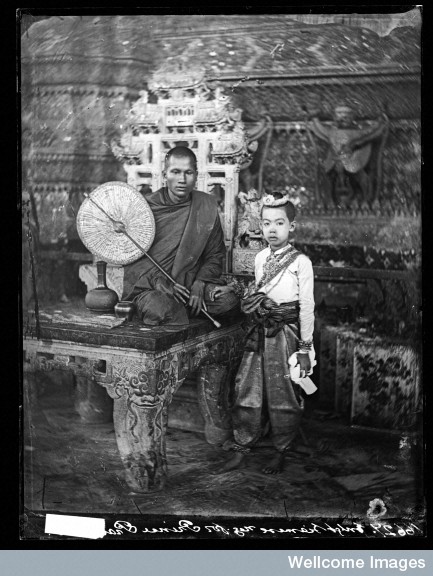
The monk and the prince.
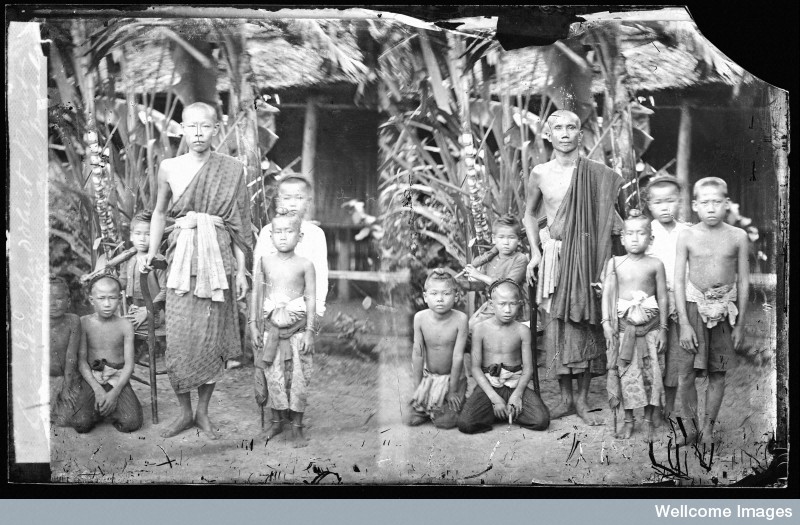
Monks and temple boys.
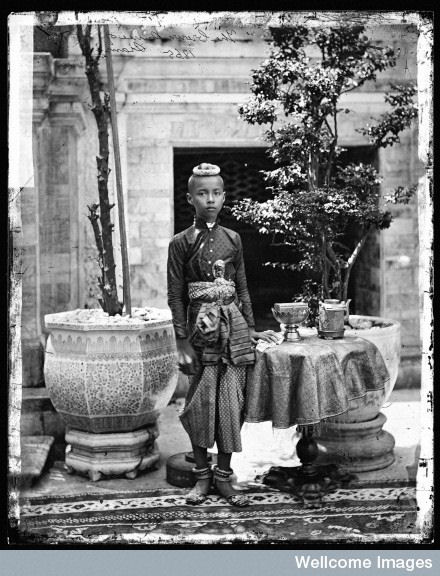
A Siamese prince, heir-designate Prince Chowfa Chulalongkorn, 1865.


